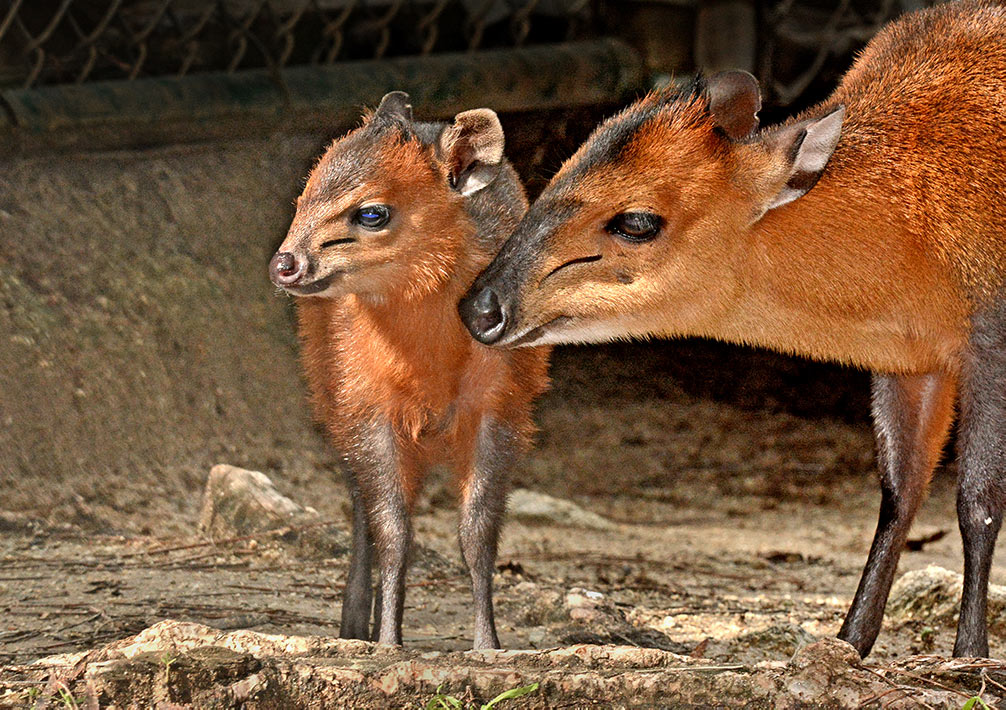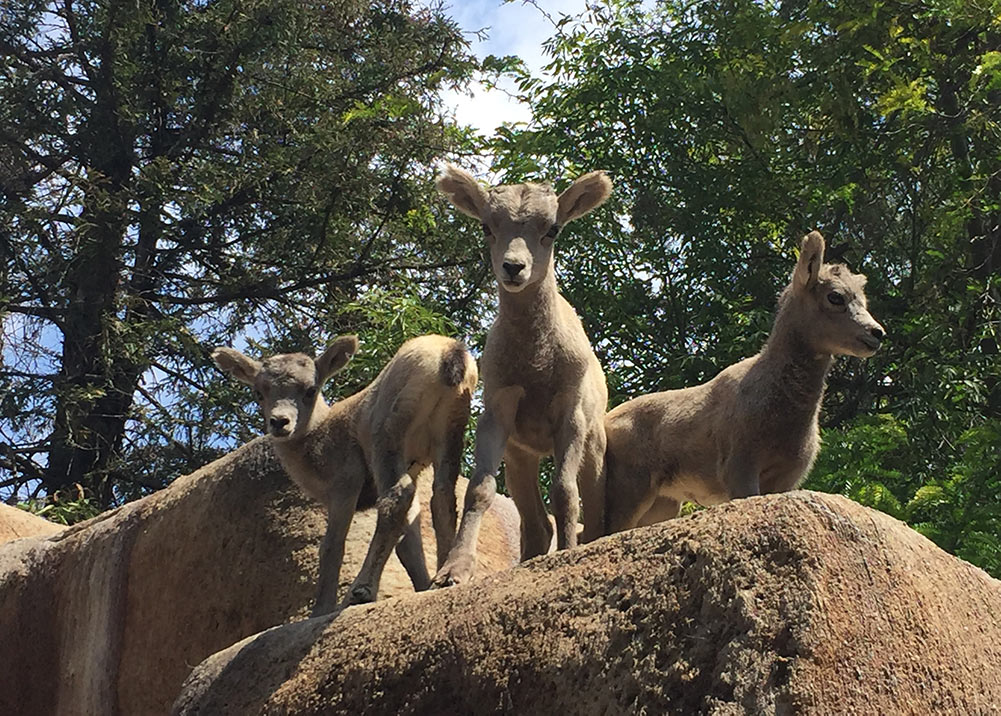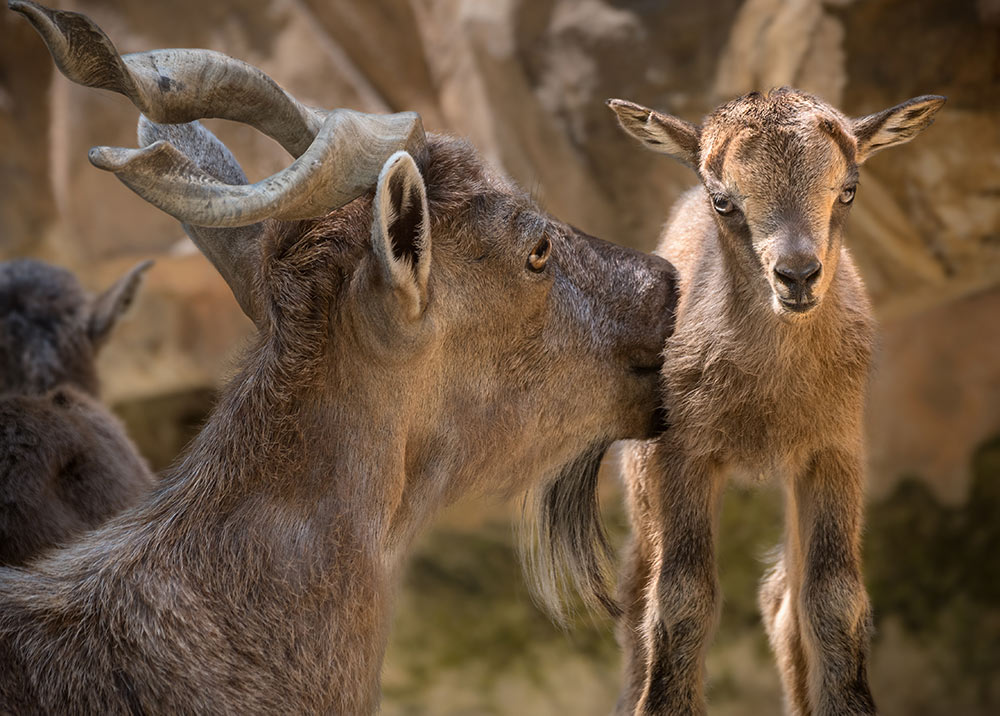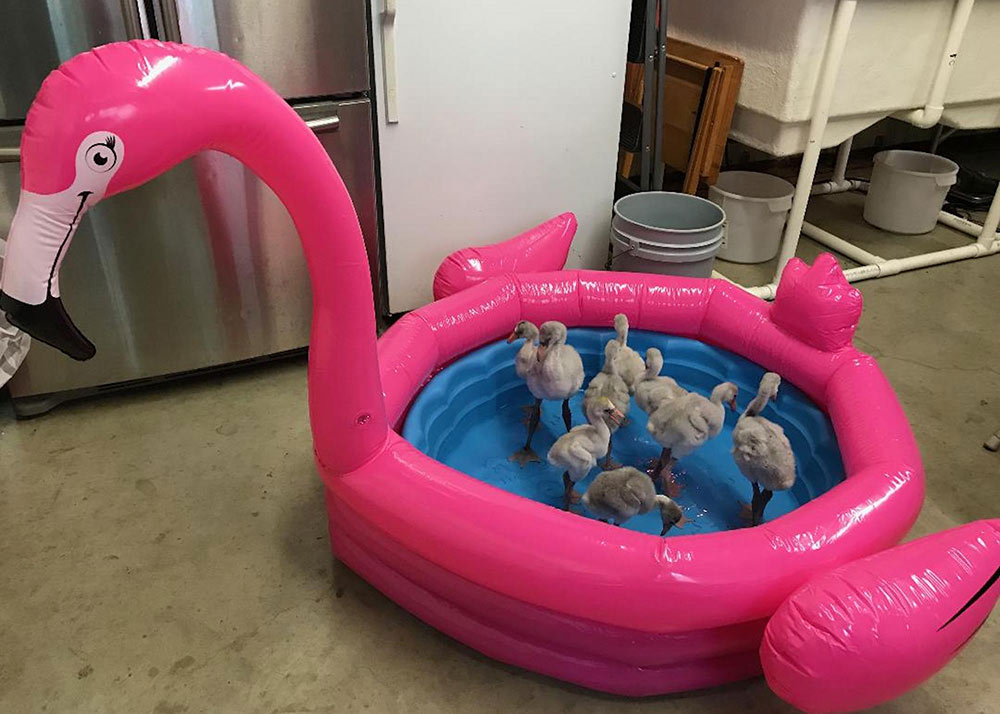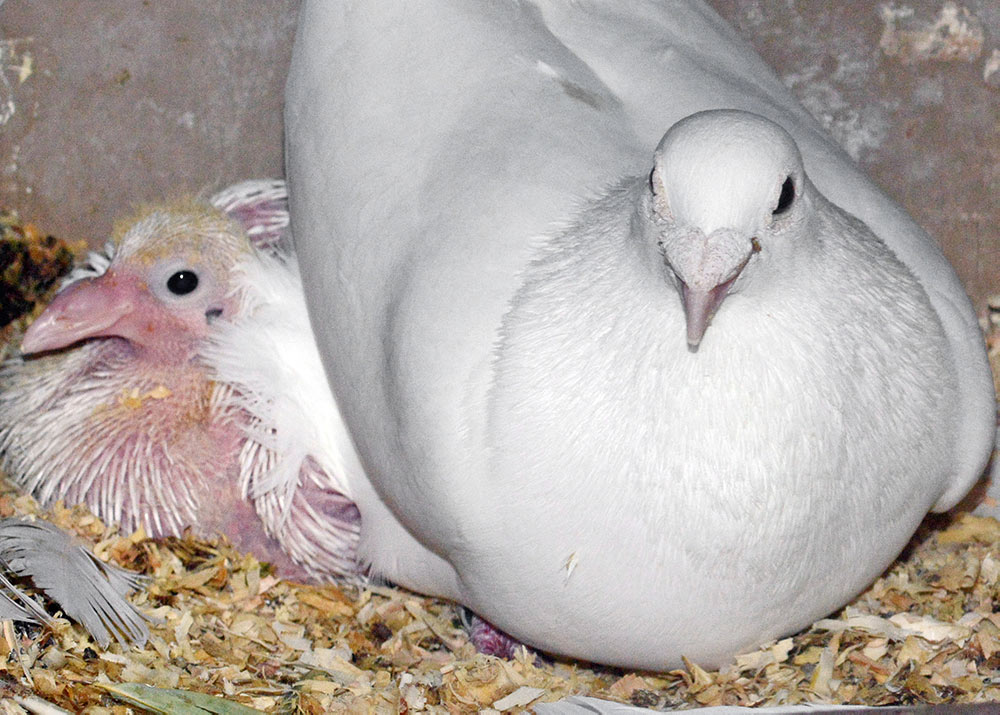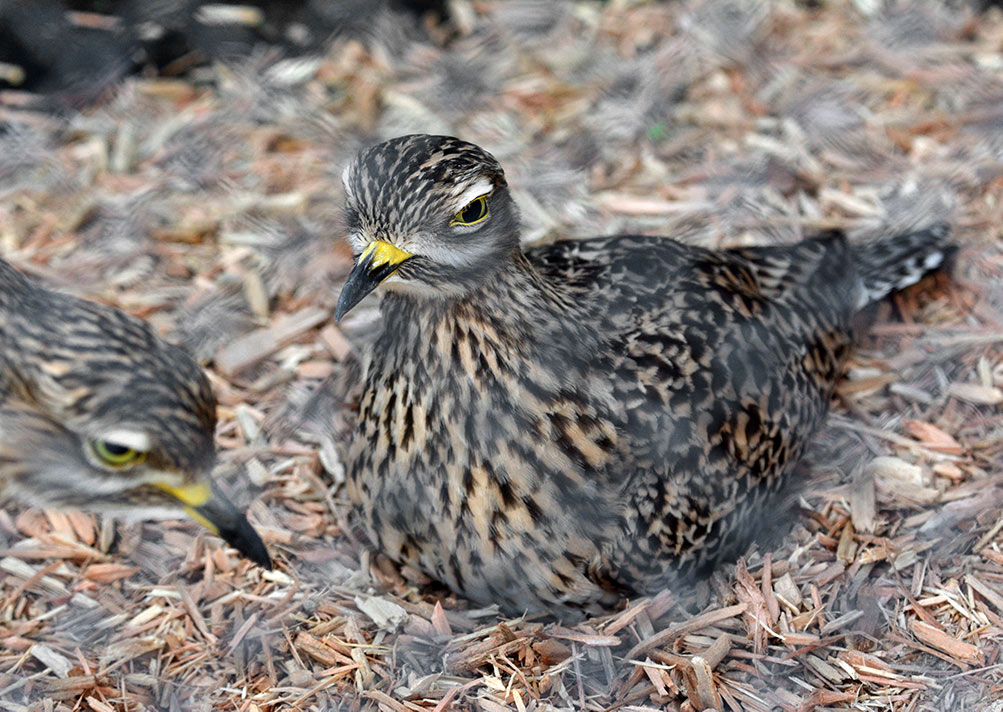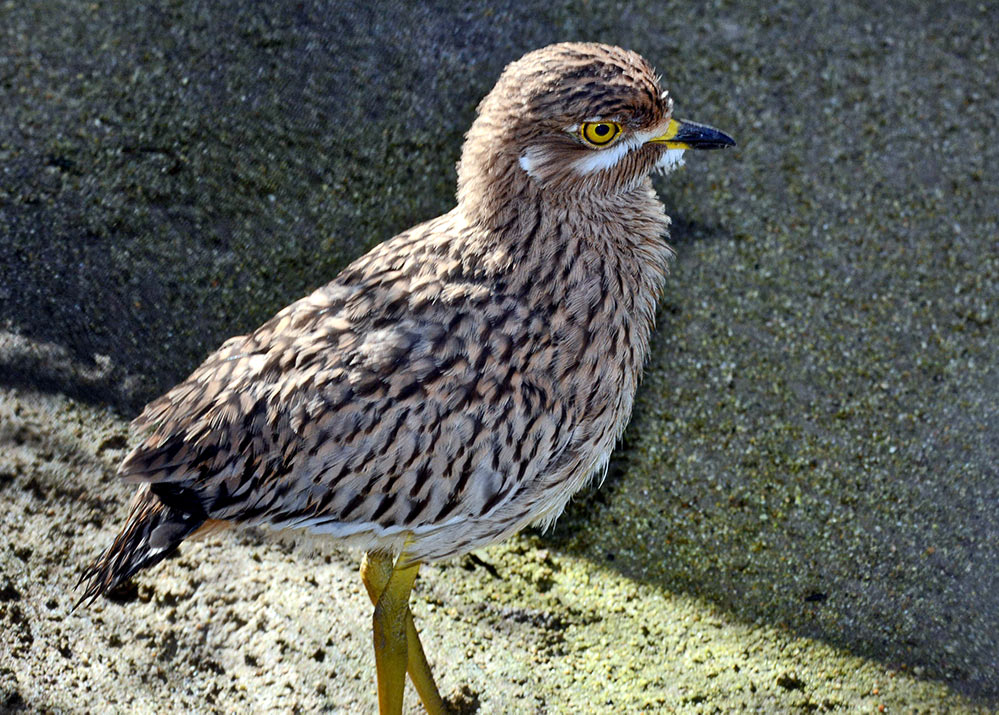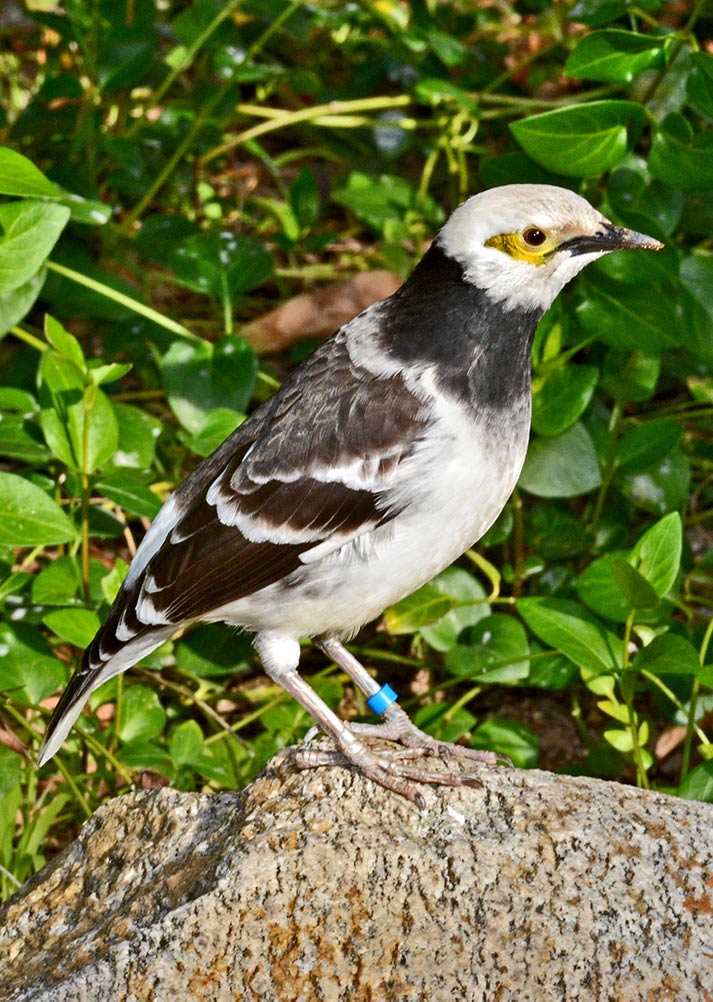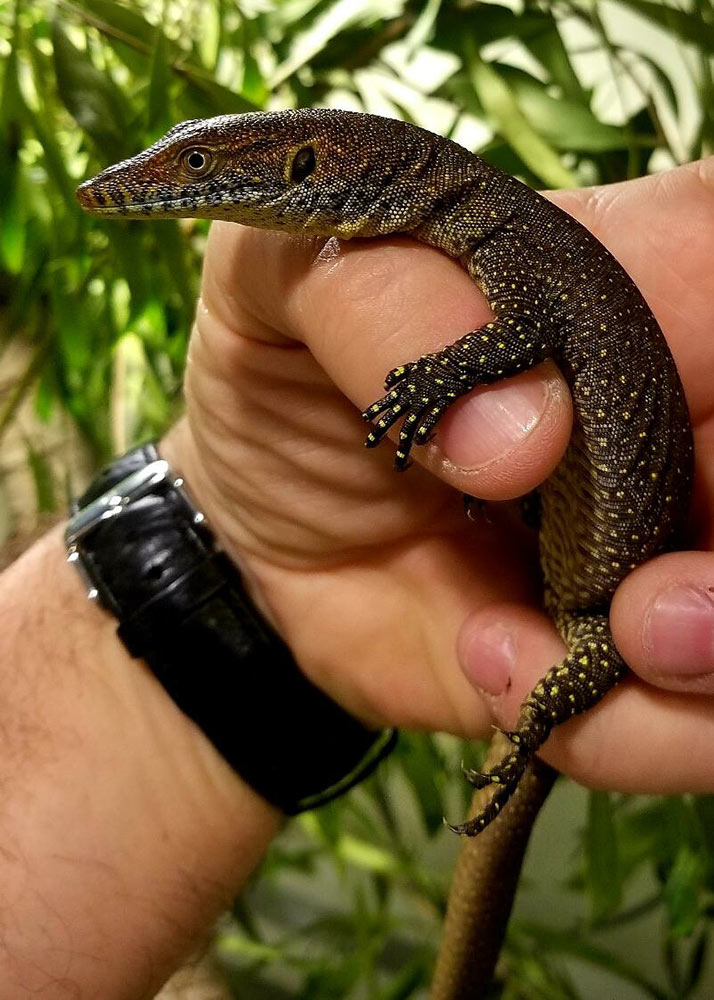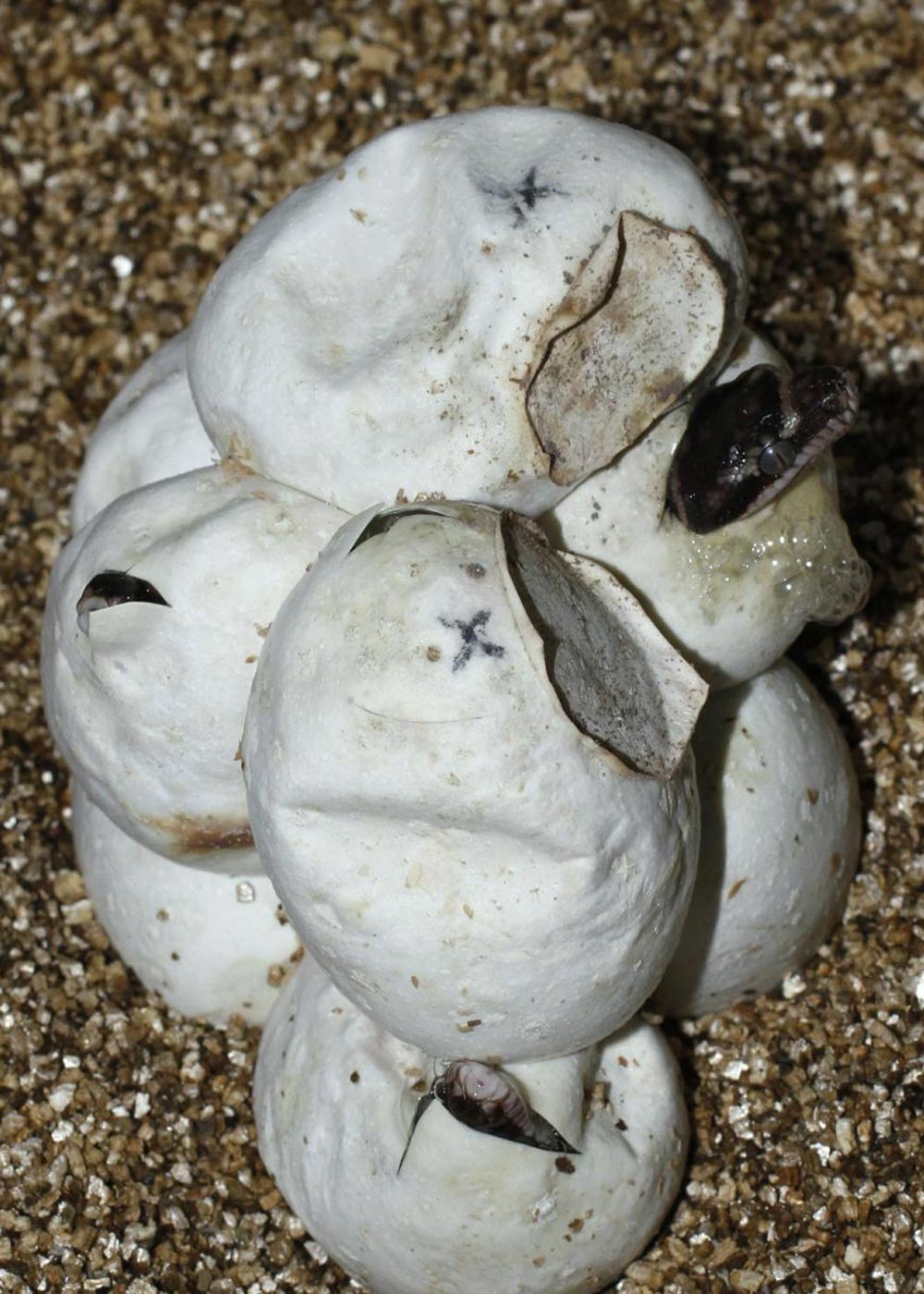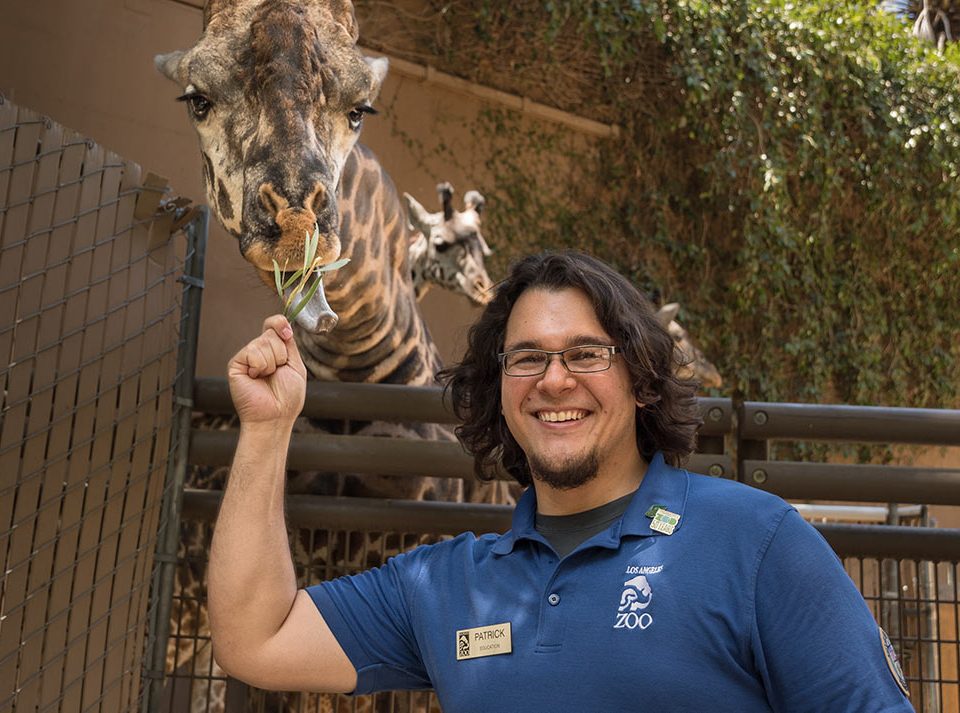New at the Zoo

Educational Adventures: Stretching to Connect Giraffes and People
July 6, 2018
This female calf is the 35th Masai giraffe born at the L.A. Zoo. Photo by Lori Conley
Recent mammal births include a female Masai giraffe (the 35th for the L.A. Zoo) who is being raised by her mother with the herd on exhibit, a red-flanked duiker who needs a little more time off-exhibit with mom, three bighorn sheep, and four Tadjik markhor.
Wild species of sheep and goats are often much more difficult to tell apart than are their domestic cousins. Because humans have been selectively breeding these animals for thousands of years (goats were domesticated about 10,000 years ago; only dogs have been living with humans longer) to serve different purposes, it’s easy to tell the Shetland sheep from the Nigerian dwarf goats at Muriel’s Ranch. Goats have been raised mainly for milk and meat. Sheep are also raised for those purposes, but they are more highly valued for their wool.
A total of nine greater flamingo chicks have hatched this season, all destined to be part of the ambassador flock that meets and greets guests during the Flamingo Mingle. They will all be hand reared by animal care staff so that they are accustomed to being with people. Three white rock doves hatched recently and will become part of the flock that concludes the World of Birds Show. A Cape thick-knee (also known as spotted thick-knee) chick hatched at the beginning of May and is being raised by the parents in the exhibit they share with the weaver birds.
A female Von der Decken’s hornbill that arrived on May 5 has joined the male in the duiker roundhouse near the gerenuk exhibit. A food exchange between them took place within the first 20 minutes—a good sign as this is a breeding recommendation. A male black-collared starling has been released into the Australasia aviary to join the female who came to the Zoo as part of the May 2017 USFWS confiscation. The pair is already building a nest. The sixth and final California condor chick for the season hatched on May 29. This year there was a total of 10 eggs for the season.
The tamanduas (South American anteaters) have been released from quarantine and can now be seen in nursery window #6, sharing the space with a red-rumped agouti.
A Merten’s water monitor arrived from Sedgwick County Zoo in Kansas at the beginning of May and will eventually move into the Australasian Aquarium/Terrarium at the LAIR. These beautiful lizards dive off trees and actively hunt for fish underwater.
Rough-scaled pythons are one of the world’s rarest snakes, so the recent hatching of eight babies is reason to celebrate. The origin of its name lies in its keeled scales, which are common in vipers such as rattlesnakes, but unusual among constrictors. Due to its tiny range and reclusive habits, very little is known about these nocturnal snakes. Adults can be seen in the damp forest section of the LAIR.


